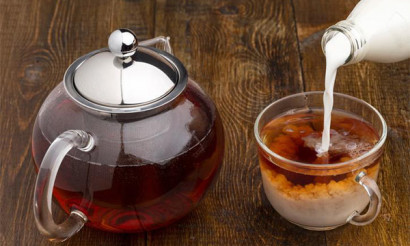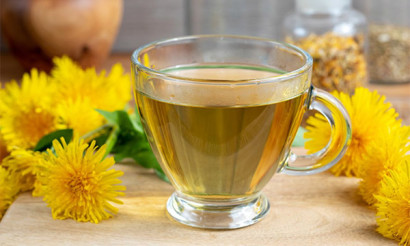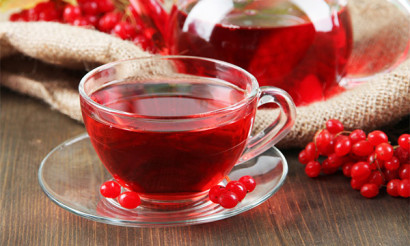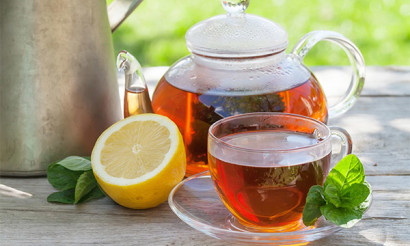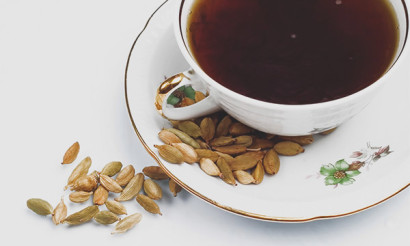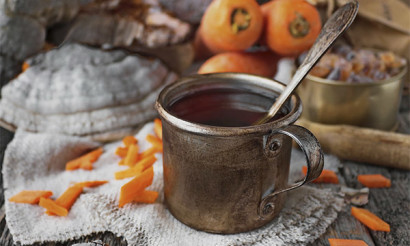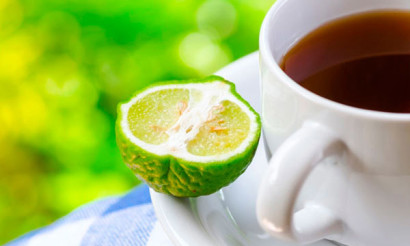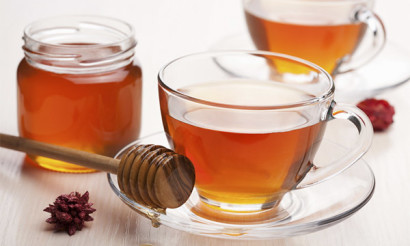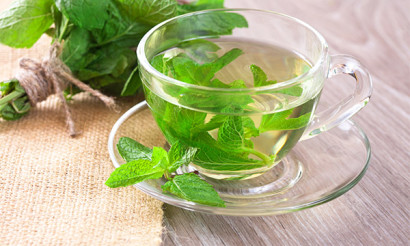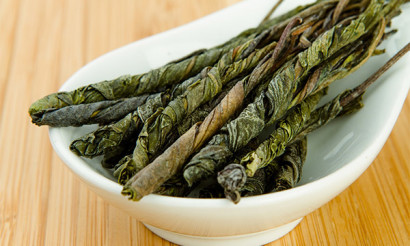Tea from cowberry leaves: useful properties and contraindications
Lingonberry is a forest berry, which has a wonderful taste and useful properties. But not everyone knows that lingonberry leaves provide benefits to the body no less than the berry. Use them not only as a cure for various diseases. From the leaves can also be brewed a great drink. He quenches thirst and has a good diuretic effect.
- Composition and calories
- Useful properties of lingonberry tea
- General benefits
- For women
- For Men
- In Pregnancy
- Breastfeeding
- For children
- When losing weight
- Harm and Contraindications
- Gathering and storage of cowberry leaves
- How to Dry
- Recipes for making lingonberry tea
- Conventional Classic
- Tea recipe that will tone up
- For those who want to lose weight
- Beware!
- Lingonberry leaves in cosmetology
- Interesting facts about lingonberry
On hot days, a drink with brewed berries and lingonberry leaves tones and refreshes. It will help in restoring the water balance, replenish the vitamins and remove edema.
Composition and calories
As soon as the snow descends, you can start collecting cranberry leaves. Before the flowering period begins, they are more potent. The leaves contain:
- tannins - 17 to 23%;
- organic acids;
- vitamins (especially group B);
- Macro- and micronutrients (selenium, iron, zinc, silver);
- 6 to 9% arbutin;
- Hyperoside - has diuretic and antiviral activity.
The above-mentioned substances are present in the leaves in quite large quantities. This indicates the presence of therapeutic effects.
The caloric value of lingonberry leaf tea per 100 g of the product is only 26.4 kcal.
Of these:
- proteins - 0.02 g;
- carbohydrates - 7 g;
- fats - 0.02 g.
Useful properties of lingonberry tea
General benefits
The composition of lingonberry leaves includes a number of vitamins, trace elements, tannins, flavonoids, antioxidants, organic acids. Due to this saturation, tea made from lingonberry leaves has a number of beneficial properties.
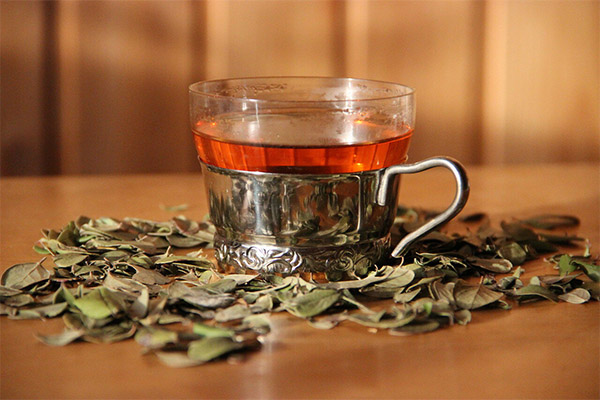
- Due to the large amount of vitamin C contained in the plant, it promotes immunity and restores the natural barrier against colds. It is especially good to drink this tea in the fall and winter. During this period, it is an excellent helper in the fight against acute respiratory infections.
- Thanks to its tonic properties, it recovers well. It is useful for people who have had severe infectious diseases and for women during the postpartum period.
- It helps to recover after a strict diet and heavy training.
- Useful for diseases of the intestines and stomach cavity, has an anti-inflammatory effect. Gastritis and ulcers provide for the use of tea only from the leaves. It is contraindicated to add fresh berries.
- Effective in the fight against stomach upset and poisoning. In this case, work the astringent action of tea from the leaves of cowberry.
- It has antifungal, anti-inflammatory and antiseptic properties in external application.
- It helps to extinguish stress, forget the problems that occurred at work, eliminates anxiety and irritability. Useful for people suffering from flatulence and frequent headaches. Quickly get rid of discomfort, dilates blood vessels.
- It is good for relieving swelling, removing bags under the eyes, removes excess fluid from the body, as it is an excellent diuretic. For people suffering from cystitis, taking this drink will help to forget about the rubber and frequent urges to the toilet.
- It has an antipyretic effect, and helps to reduce the fever with colds.
- It is very useful for people suffering from diabetes. Reduces blood sugar levels due to the content of active substances in its composition.
- It is useful when lactating. During this period, the tea should be brewed from the young leaves. In this case, the milk will become more fatty and nutritious. Its quantity will increase.
It is also useful to drink this drink:
- for cancer;
- prostatitis;
- kidney disease;
- toxic poisonings;
- viruses and infections.
But you should start drinking tea from lingonberry leaves after studying the contraindications for the intake.
For women.
Lingonberry leaves are the most, that is, a source of health and beauty for women. If you use this plant correctly, you can eventually get rid of many female diseases. Also lingonberry leaves are often used in cosmetology.
This tea for women will be a good tool for weight loss. The content in the leaves of a large number of vitamins, valuable acids and trace elements, will help improve the metabolism.
Another important point: drinking a course of tea from dried lingonberry leaves, you can get rid of excess fluid and remove toxins from the body. The product will help to cleanse the body, facilitate the work of the stomach, intestines, kidneys and liver.
For men
Tea, prepared from the leaves of the plant, will be a good helper in the treatment of prostatitis. This disease occurs against the background of an inflammatory process, and the chemical composition of lingonberry leaves creates a strong anti-inflammatory effect. Tea can be used as an addition to the process of the main treatment with medication.
When pregnant
At the moment when the mother-to-be is carrying her baby, she needs more vitamins than ever. Tea with lingonberry leaves has a lot of them. Thanks to this, during pregnancy, a woman's body can make up for the deficiency of certain groups of vitamins. Take such a drink should be a course, preliminarily agreeing the beginning of reception with the doctor.
Edema is another problem that can create discomfort during pregnancy. Edema becomes pronounced in the last weeks of pregnancy. It is possible to remove excess fluid from the body. To do this, the expectant mother should drink lingonberry tea.
Tea is prepared in a standard way. It is recommended to consume it 30 minutes before a meal, twice a day. One serving is 100 ml. You can drink no more than 1 glass a day.
Drinking tea during early pregnancy is undesirable. At this time, it can increase the tone of the uterus.
When breastfeeding
When breastfeeding, tea with lingonberry leaves will have a lot of benefits for mom and baby. The drink is used to increase the amount of milk. A course of reception can begin only after consultation with a specialist. There is a simple explanation. All the properties that are in the lingonberry leaf, during lactation, together with the mother's milk are transmitted to the baby.
For children
The leaves of the plant contain many vitamins and antioxidants, which are so necessary for children's health. Reduce the risk of seasonal and viral diseases, strengthen immunity helps vitamin C. The leaves of the plant contain a fairly large amount of it. Receiving tea with the leaves of the plant helps with the general weakening of the body and poor appetite in the child.
Also the decoction can be included in the therapeutic complex, if the child has problems with the genitourinary system, especially if the disease is associated with inflammation of the kidneys. The treatment should always be carried out under the supervision of a doctor. Tea is an aid in the fight against the disease.
Permission of the pediatrician will also be required if tea with lingonberry leaves is taken as a vitamin remedy. He will tell you about the ways of taking it and the dosages.
In the first year of a child's life tea based on decoction can be taken in small quantities, and only when prescribed by a doctor. One teaspoon 3 times a day is the norm for therapeutic purposes. If the drink is taken for preventive purposes, the dosage is reduced.
When losing weight
The leaves of the plant contain tannin. It promotes the normalization of the digestive organs. This is relevant for people who adhere to any diet. Tea helps to cleanse the body of toxins, which is important, and helps to improve metabolism and normalize blood sugar levels. On this basis, if you drink tea during any diet, the effect will increase.
Harm and contraindications
Tea from lingonberry leaves can not always be useful, but in some cases, drinking it can cause harm to the body. This drink can't be 100% harmful, but a certain category of people should use it with caution, or refrain from drinking it at all.
Who should refrain from drinking such a tea:
- People with low blood pressure;
- Those who suffer from liver disease (insufficiency);
- People with stomach ulcers;
- Persons with hyperacidity of the stomach;
- Pregnant women (use may result in increased uterine tone);
- Patients during exacerbation of any diseases of the digestive system.
People with an individual intolerance and tendency to allergic reactions should use such a drink with caution. Children under 12 years of age are not recommended to brew such a tea. Treat any disease only with the permission of the attending physician. An overdose of the drink may cause nausea. If this reaction occurs, you should stop drinking the tea for a while.
Collection and Storage of Lingonberry Leaves
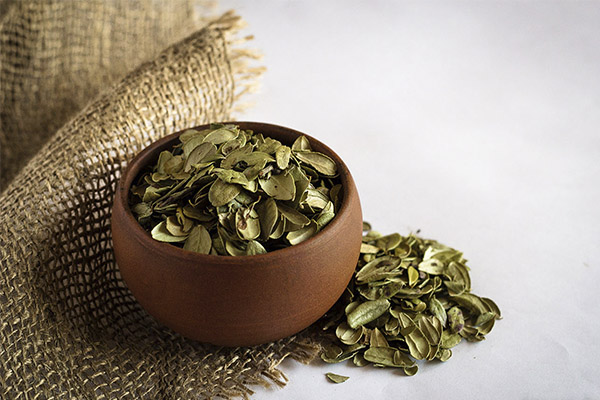
Gather the leaves of cranberries in the fall and spring. In the spring, you need to have time to collect the leaves before the plant begins to bloom. In the fall, you can start collecting leaves after the fruits are fully ripe. Collecting leaves in the summer is useless. In the process of drying they will turn brown.
Harvesting the raw material is done manually, cutting off the shoots with scissors. The shoots are separated from the leaves upon completion of drying. Leaves that were harvested when the snow was melting are the most valuable and of the highest quality.
When preparing the raw material, do not pluck the plant with the rhizome. It should be remembered that cranberries are propagated vegetatively. The next time to harvest leaves on the same plot is possible in 5-10 years. This is how long it will take to restore the lingonberry bushes.
The leaves should be scattered in the attic with good ventilation in a thin layer or in a room with unobstructed access to air.
How to dry
It doesn't end with picking the leaves. This is only half of the way through. The next task is to preserve the useful properties during drying. How to do it correctly?
The raw material can be dried naturally:
- At room temperature;
- In dry weather under a roof.
The main thing is that the raw material should be collected in time and in dry weather. It should be cleaned (not washed) of any dirt on it. Then lay it out on the surface. It must be flat and clean. The surface should be covered with paper or cloth. The leaves should not be exposed to direct sunlight. From time to time they need to turn. When the leaves start to turn black or brown during the drying process, it means only one thing - the process is broken. Such a product is not fit for consumption.
If there is any doubt about the first method, you can process the leaves in an oven or electric dryer for greens and vegetables. The door in the oven should be kept half-open at a temperature not exceeding 40 degrees. The processing time is 5 hours. But this figure is not always correct. It is better to determine the readiness of the leaves by their condition.
A sign of the readiness of raw materials - slightly bent downward edges on all leaves. The top part of the leaves is darker than the bottom. The top part of a properly dried leaf should remain naturally green.
Paper bags or wooden crates are considered the best storage containers. It is recommended to store leaves in a dry place. Humid environment will impair the useful properties of the product.
If the process is carried out using a household electric dryer, be sure to clarify the load capacity of the device and read the instructions for use. Observance of all the rules is the key to an excellent result.
Recipes for lingonberry tea
On the territory of the CIS, tea is an integral part of everyday life. We can say that tea drinking has long become a tradition. This hot drink can be confidently called an alternative to coffee. There are many variations of this drink. People experiment, adding different ingredients to it to get a new and unique taste.
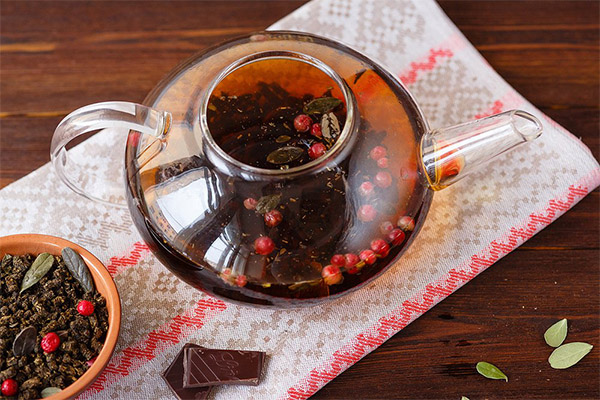
Lingonberry tea is a drink that has been tested by more than one generation. Those who have drunk this tea, can't help but note its wonderful aromatic and gustatory qualities. But this is not all, it has a lot of positive effects on the human body. It contains a large number of nutrients and vitamins. Raw materials for cooking can be not only berries, but also leaves. They must necessarily be pre-treated.
Now there are many recipes for the preparation of lingonberry tea. The drink can not only be drunk, but also actively used in folk medicine to treat many ailments. Also, the fruits and leaves of cranberries can be combined with other useful plants during the preparation of tea. This will create a double effect in the fight against diseases. Let's consider some recipes.
The usual classic
To prepare it, the following steps should be performed:
- 1 liter of boiling water pour 2-3 tablespoons of dried leaf;
- Leave to infuse for 30 minutes;
- Strain and divide into 3-4 equal parts.
The resulting drink can be drunk both warm and cold, here it all depends on preference. If you have a desire, you can dilute it with honey or sugar. Store this tea in the refrigerator. The jar for storage should be tightly closed. Shelf life - no more than 2 days. Beverage is recommended to take after a meal in a heated form. At one reception - not more than 70 ml.
Recipe for tea, which will increase your tone
This recipe will help to lift a bad mood and many times increase the burst of energy. To prepare it, do the following steps:
- Prepare 2 tsp. of dried lingonberry leaves, mix with 3 tsp. of regular leaf tea.
- Add one cinnamon stick.
- Pour 500 ml of boiling water over the resulting mixture.
- Cover with a lid and leave to infuse for 15 minutes.
After that you should drink the tea in small sips. You can dilute the taste with your favorite sweets.
For those who want to lose weight
If the goal is to get rid of excess weight, you can use this recipe for tea with lingonberries and ginger.
To prepare it, you need to do the following steps:
- take ginger (2-3 cm), cut into small pieces, add 1 tbsp of lingonberry berries;
- Pour the resulting composition of 1 liter of boiling water;
- Infuse the drink, its temperature should be equal to room temperature;
- Take a strainer and strain.
You can add honey, it will sweeten the tea.
There is another recipe for making tea for weight loss using the leaves of the plant. You need to do the following steps:
- Take 40 g of dried leaves;
- Pour a liter of water;
- During the 20 minutes soak in a steam bath;
- Strain through medical gauze or strainer.
The course of taking such a tea lasts for a month. Drink the drink should be three times a day. After the end of the course, you need to take a one-week break. The result is the loss of a couple of extra pounds. This effect is possible due to the diuretic action.
Caution!
Do not forget that tea and drinks from cranberries are therapeutic. It is not allowed to consume them routinely as a drink. In most cases, the course of taking tea from cranberry raw materials should not exceed two weeks. After that you should rest for 10 days.
People with hyperacidity should be cautious about taking such teas. And women during pregnancy can drink such medicinal drinks with the permission of a gynecologist.
It should be remembered that tea from cowberry leaves is a strong diuretic drink. In cases of weight loss it is necessary to remember that uncontrolled intake of tea can lead to potassium washout and dehydration of the body.
Lingonberry leaves in cosmetology
The fruits and leaves of the plant are used for cosmetic purposes. The useful properties of this plant will be a good assistant in the care of the skin and hair.
- When hair loss occurs, the berries and leaves of the plant will help stop the process, as they have astringent strengthening properties. From the berries you can prepare therapeutic masks, and from the leaves - decoction for rinsing.
- For a person suffering from dandruff, the plant will be an indispensable helper. It will soften the skin and relieve unpleasant itching.
- Decoctions and infusions from the leaves of the plant will help give shine and softness to sick hair.
Also, the plant will help get rid of pesky acne, give the skin elasticity and soften it, prevent the premature appearance of wrinkles.
Interesting Facts about Lingonberry

- In Latin, a species of this plant is called "vine of grapes from Mount Ida." These days it is a popular tourist destination on the island of Crete.
- Lingonberry flowering begins in early summer and lasts only half a month.
- The berries of the plant tolerate low temperatures quite well. Once under the snow they do not lose most of their properties.
- Lingonberry bushes are not affected by harsh climates. They can grow in mountains and tundra.
- Cultivation of cowberries in Russia tried in the 18th century. The attempt was not successful. The results were achieved only in the 60s of the twentieth century.
- Cultural plantations with the berry surprise with their yields. Unlike their forest counterparts, these plantations yield 30 times more berries. One hectare of land gives the farmer 50-60 kg of selected berries per year.
- The berry has found wide application in many countries of the world. It is used for marmalade, candied, made into jams and various marinades, and dried. Lingonberry jam is recognized as a national delicacy in Sweden.
- Ordinary lingonberry morsel was mentioned by the great Russian poet Alexander Pushkin in his poem "Eugene Onegin". There this drink was called "Lingonberry water". It was mentioned that the drink was kept in the cold, thanks to which all the useful properties were preserved.
- After collecting the leaves for three years, they can be used to make medicine. Scientific medicine has developed many tinctures and solutions based on lingonberry leaves. They are used as antiseptics.
- Lingonberry has a twin - bearberry. It is almost impossible to distinguish them.
- Lack of vitamins can be made up with the help of fresh lingonberries. The berry is an excellent choleretic, antiseptic and laxative.
- Decoctions from the leaves of the plant help in the treatment of many severe diseases (gout, diabetes, rheumatism).
- High blood pressure can be normalized by drinking cranberry juice or morsels.
- The word lingonberry comes from the Old Russian word "brusvyany". Translated into modern parlance, it means red.
- Lingonberry in ancient times was called a berry, which is harmful to the body of men.
- The life cycle of the lingonberry bush can be compared to such a mighty tree as the oak. And it lives for about 300 years.
«Important: All information on this site is provided for informational purposes only purposes only. Please consult with a health care professional before using any of our recommendations. specialist. Neither the editors nor the authors shall be liable for any possible harm caused by materials."

